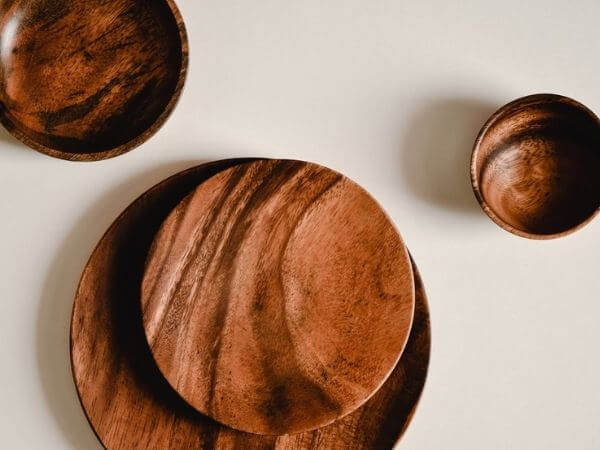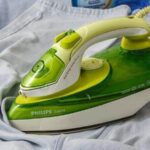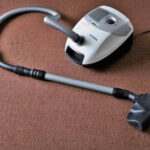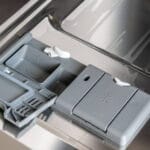Wooden bowls and plates are great for serving salad. But they are even better for giving your kitchen the decorative rustic old house touch. Not to mention, a good wooden bowl is as durable as real diamonds.
All the same, your bowl can only serve these purposes with proper care and maintenance. And this entails regular cleaning and proper storage.
But before we dive into the steps, here is an interesting bit of history for washing wooden salad bowls.
History of Cleaning Wooden Salad Bowls
Apparently, in the 1930s and several decades later, cleaning wooden salad bowls was a thing for the low and middle class persons. The upper class group did not clean their bowls. The whole concept behind the practice was to help improve the taste of salad with each new use.
It is not clear why the trend differed with social classes. I tend to think the salad ingredients the upper class used were different if this makes any sense.
Today, there are still people who believe that a wooden salad bowl should not be cleaned after each use. They liken the idea to using a wooden pestle and motor to crash garlic for a given period of time without washing it. Interestingly, they also swear by the salads made in these bowls.
But this is wrong because salad bowls can even begin to stink after one use. This depends on the kind of ingredients used to make a salad.
Secondly, they can harbor dangerous bacteria.
Lastly, the salad doesn’t taste any better. And if it does, all credit should go to the person involved in making it and the recipe.
How to Clean a Wooden Bowl
Clean a wooden bowl as regularly as you use it. Further, have in mind that how you use your bowl can determine how you use it. Thus, there are several approaches to choose from but the most basic one is using soap and water.
Soap and Water
Warm water and dish soap can help eliminate dirt and bacteria from your wooden bowls. Fill the sink with warm soapy water and dip your bowl inside. Scrub it immediately with a scourer or a similar kind of a scrubber and rinse with warm running water. Wipe off the water with a dry microfiber cloth and store it in a rack so that it can continue to dry.
Important note: Do leave your bowl submerged in the water. Avoid letting it soak with water or as well. The porous wooden material absorbs water which causes damage over time.
Water and Vinegar
If your bowls are clean and all you need is to sanitize them, then a solution of water and vinegar should your first go to option. Vinegar is not only cheap but also effective for a variety of home cleaning applications.
Mix vinegar and water in the ratio of 1:3 and transfer the solution into a spray bottle. Spray your bowl with the solution generously and use a microfiber cloth to wipe of the excess. Place the bowl strategically in a dishrack so that it can dry completely.
Salt and Lemon
Sometimes your wooden bowl may develop stains from repeated use. Use lemon and salt to clear the stains. Begin by placing lemon in the microwave for a few seconds so that it can soften up for easier squeezing. You can also achieve the same results by using your hand to roll it on a table.
Place lemon on a chopping board and cut it widthwise. You should end up with two bowl like halves. Sprinkle salt on one half and use it to scrub your bowl until the stains disappear. You might need to repeat this step severally for resistant stains.
Rinse the bowl with warm water and wipe off with a microfiber cloth. Finish up by setting it up on a rack to continue drying.
How to Restore Wooden Bowls
Your wooden bowls might be clean but looking old and retired. In this case, all you need is a little effort to restore them. Firstly, begin by smoothening marks and a fine grit-sand part. Marks are common on wooden bowls and plates because of impact caused by sharp objects such as a knife.
Pour a few drops of food grade mineral oil on the bowl and use a microfiber cloth to apply it liberally on the inside and outside the bowl. Place the bowl on a dry place and leave it overnight. Repeat oil application process the next day and wipe off excess with a microfiber cloth or paper towel.
Seasoning your bowl every once in a while is important. It helps keep it in good condition for a long time.
Tips for Maintaining a Wooden Bowl
Whether you use your bowls for salad or something else, ensure that you clean them after every use. Wood absorbs fluids from food thus getting damaged slowly and creating a favorable environment for bacteria to grow and thrive.
Wipe wooden bowls dry after washing. This prevents water prom penetrating deep in the wooden material to cause cracking or bending.
Store wooden bowls in a dry place. Wood develops molds easily when left in a dump or wet surface for a prolonged period of time.
Frequently asked Questions
How do you clean an old wooden bowl?
Clean old or new wooden bowls in a solution of warm water and dish soap. Use a scourer or brush to clear food particles from the bowl and rinse it clean warm water.
How do you get stains out of wooden bowls?
Treat stains with lemon and salt by scrubbing them off with a half lemon piece sprinkled with salt.
Can I use olive on a wooden bowl?
You can use olive oil but it is not the best option for seasoning wooden bowls. Food grade mineral oil is the most recommended because besides nourishing, it keeps your bowls in good condition for a long time.
What oil is best for wood?
Food grade mineral oil is the best for wood commonly used in the kitchen. Other decent substitutes that you can use include walnut and linseed oil.
Can you put wooden bowls in a dishwasher?
You cannot put a wooden bowl or other wooden kitchenware in a dishwasher because it will soak them with water. Wooden utensils should not be submerged in water because wood absorbs water and begins to crack. A dishwasher is also not as effective for cleaning wooden kitchenware.





